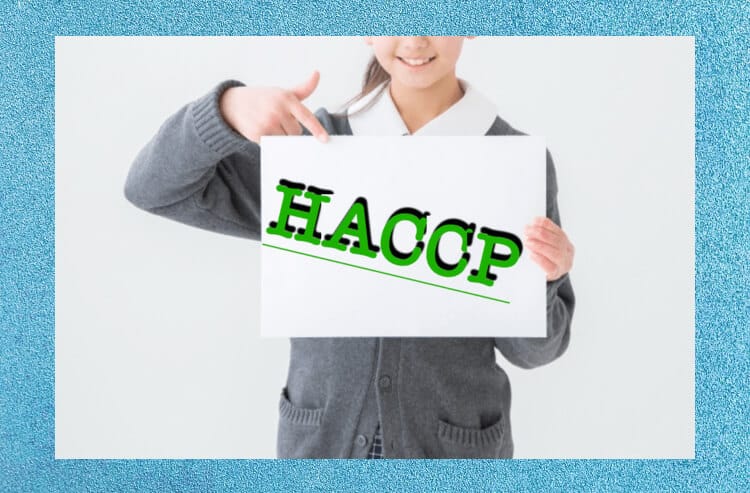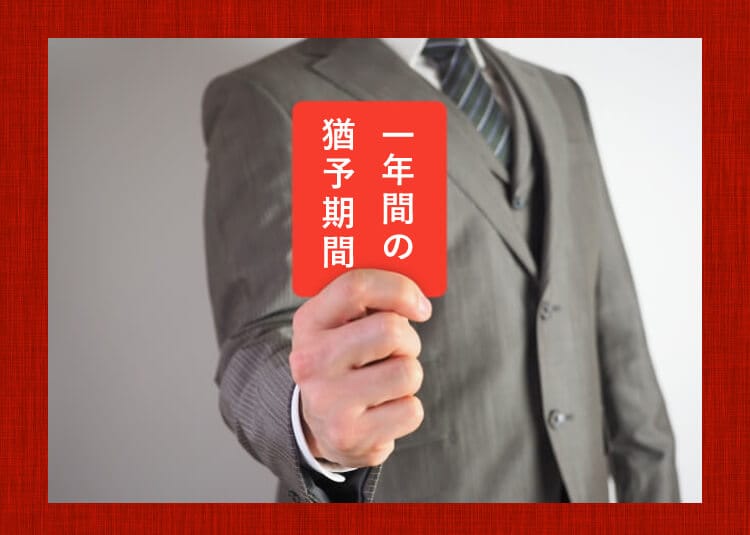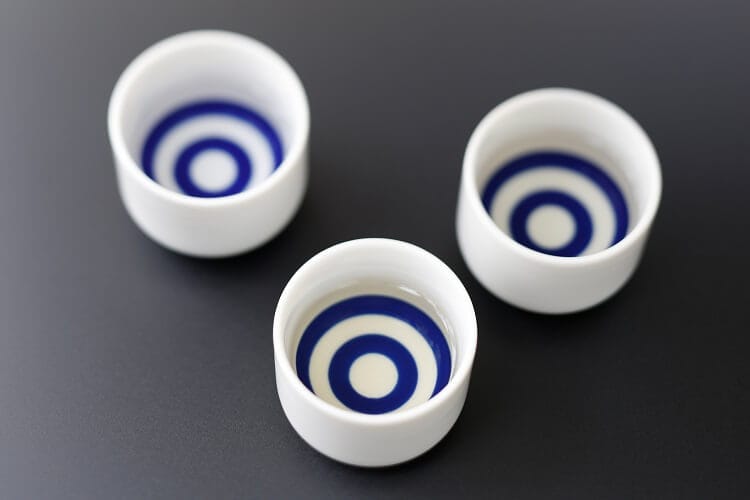
The Food Sanitation Law was revised on June 2018, 6. From that day on, all food companies are required to obtain HACCP certification for their food hygiene management system, not just for certain businesses, such as major manufacturers and exporters.
Food companies are restaurants, retail stores, distribution warehouses, etc., and all businesses that handle food. Regardless of large, medium or small scale.
The background of the government's mandate is that the number of Japanese foods exported overseas is increasing rapidly, the Tokyo 2020 Olympics is imminent, and before that, food poisoning is still occurring in Japan and the health of the people is increasing. Is not protected.
You might think, "I don't care about international standards because I'm a small shop in the countryside," but in the future, with or without HACCP certification will be related to the assumptions and license renewal for new transactions. The likelihood is high.
This time, I will explain HACCP which will be required in the process of globalization of the sake industry.
About HACCP
View this post on Instagram
HACCP is an acronym for "Hazard Analysis Critical Control Point", which is translated into "Hazard Analysis Critical Control Point" in Japanese and "Hygiene Management by Food Risk Analysis" in plain language.
HACCP is now the international standard for international sanitation management. The world believes in foods that have HACCP certification.
The birth of HACCP
View this post on Instagram
The HACCP idea was born in the 1960s as the United States pursued the Apollo program. NASA and the United States Army, etc., have thought about safe space foods, and have repeatedly studied how to safely eat them in space.
The concept of HACCP, which is safe even if it does not go to space food, has spread to countries around the world seeking food safety. In 1993, HACCP guidelines were established by the International Food and Agriculture Organization and the World Health Organization.
Subsequently, HACCP has become a requirement in developed countries, and in the United States and the EU, hygiene management based on HACCP is mandatory for all foods.
In countries that require HACCP, "Do not import products from countries that do not require HACCP"Is becoming common sense. That global swell mandates HACCP in Japan.
Japan with high need for HACCP
View this post on Instagram
Until now, we knew the necessity of HACCP, but realized that it was only for specific businesses involved in manufacturing and export. However, the reality is that restaurants, retail stores, distribution warehouses, etc. are obligated regardless of the size.
In Japan, food poisoning accidents such as O157 and the contamination of foreign substances have occurred quite a bit, and it is finally recognized that the necessity of institutionalization as well as relying on Japanese food hygiene management standards has been recognized.
Some people believe that the quality of Japanese food is high because the government controls it, but the incidence of food poisoning in Japan is still falling. For example,
- O 157
- Norovirus
- Anisakis
- Campylobacter
Outbreak news is still constant.
In fact, while writing this article, there was a telop saying that "food poisoning occurred in Kanazawa due to sashimi of chicken liver."
Regarding Campylobacter food poisoning cases, the Ministry of Health, Labor and Welfare's “29 food poisoning outbreak situation (summary version)” reports as follows.
Based on the reports of major food poisoning cases and prefectures,About half of the cases provide raw or undercooked chicken, even though the stock has a label for cookingWas.
Kanazawa City has said the store has been closed for three days, but this does not prevent the recurrence of the reba stab food poisoning incident that has been repeated many times.
Consumers are always suffering from being fed a raw liver that has to be heated because they trust the store and think that it is a fresh liver. But the store will be back in 3 days.
What Japan needs is HACCP, which is being promoted by developed countries.
Why HACCP is slow to spread in Japan
View this post on Instagram
In Japan, major companies doing business overseas also adopt HACCP. But to be ashamedJapan's HACCP adoption rate is quite low among developed countriesIt is a state.
The cause can be said to be the indifference of business owners and business managers, but it is also tempting to say something to countries that are observing the actual situation and hurrying up and becoming obligatory just before the inbound increase.
Businesses who are in a hurry to be told to "acquire HACCP certification" are as good as water in their ears.
What happens if HACCP is not introduced by 2020

The HACCP mandatory law has been decided to come into effect in June 2020.
But,One year grace period as a transitional measureIs provided.
Therefore, it is necessary to introduce HACCP sanitation by June 2021. Businesses that do not implement it are considered to be in violation of the Food Sanitation Law.
Is there a penalty for not introducing HACCP?
HACCP mandates are stipulated by law, but there are no clear penalties. However, penalties may be imposed depending on the prefectural regulations.
For example, if you have not obtained HACCP certification and have ignored food hygiene due to ignoring hygiene management,`` Prison sentence of 3 years or less or fine of 300 million yen or less (1 million yen or less for corporations) ''It has become. Quite tough.
Before that,Recognition that stores without HACCP do not have food hygiene management is widespread, and customer traffic will decreaseIt can be considered.
In addition, If renewal of business license is checked for HACCP not introduced, renewal may not be possibleIt is wise to introduce it early, as there are some.
HACCP is not difficult
About HACCP
This is a management to eliminate the shipment of problematic products and prevent food poisoning.
HACCP basics
- Assumed in advance where potential problems may occur, such as raw materials, purchasing and cooking processes
- Confirm that the problems assumed during actual cooking and manufacturing have been cleared
- Monitor not only once but continuously
Doing the above is HACCP.
It seems difficult to explain in this way, but in the example of a restaurant, the following is specifically done as routine work.
- Check items such as heating, cooling, sterilization, delivery, and thermometer records for all recipes are recorded every time cooking is performed.
- Except for cooking, record the opening date of opened foods and periodically check the storage status
Because it seems to be troublesome,It costs money to introduce HACCP into my store"And,"I have to hire a specialist"And,"It will take time and effort to prepare the documents and apply for the HACCP certification at the government officeI think many people are worried.
Therefore, we will introduce the flow of HACCP certification acquisition.
Flow and period for obtaining HACCP certification
First of all, please see the movie "Guide to introduce HACCP in food production (about 33 minutes)" compiled by the Ministry of Health, Labor and Welfare.
In general, it seems that you often consult with the HACCP Certification Association (although you can do without consulting, of course), so we will introduce the schedule from that.
The following is an example of a schedule for a business that wants to study HACCP from the basics.
| 1st month | Study session on the history of HACCP, benefits of introducing HACCP, basics of hygiene, etc. |
| 2st month | |
| 3st month | Learn the cleaning method and create a sanitary standard work procedure |
| 4st month | |
| 5st month | Create HACCP plan, document records |
| 6st month | |
| 7st month | Claim handling and recall procedures, inspection manual |
| 8st month | HACCP manual preparation |
| 9st month | Set quality goals and declare the introduction of HACCP |
| 10st month | Create Material Safety Data Sheet |
| 11st month | Preliminary screening by a consulting company |
| 12st month | Final review from HACCP Certification Association |
I sigh for quite a few steps and time.
縺 縺 險 Doctor Top management is determined to improve hygieneIn the past, "ISO2200■, Etc.)Apply for certification in the fastest 2-4 monthsIt seems that there are times when you can.
* ISO2200 is "Food Safety Management System-Requirements for Food Chain Organization" and is an international standard for creating a mechanism to prevent food harm in all food processes.
Documents required for certification application

When your establishment is ready to accept a review from the HACCP Certification Association (in the table above, 12 months), apply for certification. The documents required at the time of application differ depending on the industry and industry, but generally the following documents are required.
For specific examples such as tables,Ministry of Health, Labor and Welfare "Introduction to HACCP in Food Manufacturing"Will be helpful.
Although this is likely to be a large-scale initiative for a business establishment, incorporating HACCP has the following advantages.
Benefits of incorporating HACCP
HACCP is actually a general hygiene5S = Sorting, organizing, cleaning, cleanliness, discipline"When"7S = 5S with cleaning and sterilizationTo monitor.
It is said that there are great benefits for companies just working on 5S. that is,
- Food poisoning is prevented
- Thorough compliance
- Reduced inventories due to daily quality control
- Organize and clean up better
- Increase operational efficiency
Is also obtained.
There is also funding for HACCP certification
View this post on Instagram
The Japan Finance CorporationFood industry quality control advancement promotion (HACCP) fund"Is handled. This HACCP fund
- Building maintenance
- Installation of sanitation management equipment
- Machinery and equipment for monitoring and control systems
- Production facilities to be integrated with 1 to 3
, But for HACCP introduction,
- Consulting costs
- System development costs
- Research expenses
- Costs required for a smooth startup of a HACCP introduction facility
Is also applicable.
In other words, it covers everything from hand-washing equipment to barcode readers, so why not feel free to consult us.
Click here for "HACCP Support Law Loan Image"
↓
Click here for "Food Industry Quality Management Advanced Promotion (HACCP) Fund"
↓
Is HACCP Certification Required in the Sake Industry?
The following countries require HACCP certification for imported foods:
| America | Seafood, processed fishery products, beef |
| EU | Seafood, processed fishery products, beef |
| Canada, Hong Kong, Singapore, Mexico | beef |
| New Zealand | clams |
In these countries, presentation of HACCP certification is not required for sake, and it is thought that many sake brewers are conscious that food poisoning rarely occurs because sake is originally an alcoholic beverage.
Without HACCP certification, it may be disadvantageous for overseas business
In response to the recent boom in Japanese sake overseas, the number of sake brewers who are serious about exporting overseas is increasing.
According to JETRO's overseas business information,
Australia is also HACCP compliant. It is important to note that some states have regional restrictions on the sale and consumption of alcohol.
And that. It seems safe for sake breweries and businesses entering Australia to obtain HACCP certification.
If the sake brewer does not introduce HACCP, the sake of the sake brewery is not managed according to the HACCP standards, that is, it is considered to be `` dangerous because it may cause food poisoning or foreign matter contamination '' May be refused.
Is there a HACCP model for sake?
The Ministry of Health, Labor and Welfare describes the procedure for introducing HACCP by showing examples of nine types of products as HACCP model examples.
However, these cases do not include sake, and each sake brewer may be puzzled over what to start with.
After a quick survey on the net, the one that seems to be helpful is the Ministry of Health, Labor and Welfare's ``HACCP model example-fermented food and rice miso"And"Guide to getting started with HACCPPer ". I think the latter is rich in illustrations and easy to understand.
Example: Confirmation of HACCP certification from overseas! "Fukui Prefecture Kuroryu Sake"
View this post on Instagram
The reason why Black Dragon Sake Brewery, which is highly regarded as Ginjozo, began to work on HACCP,Question from overseas suppliers as to whether they have HACCP certificationThat was the beginning.
So at Black Dragon Sake BreweryHACCP project team was launched in November 2017 and successfully obtained HACCP certification in January 11Was.
In the future, we are considering exporting to Malaysia and Singapore,Expect to be one of the deciding factors in marketing when competing with other companies' sakeare doing.
Even if the destination country is not required, it seems that the business operator in that country has to respond if it requests HACCP certification.
Click here for "Kuroryu Shuzo"
↓
Sake brewing that has acquired HACCP
According to the National Tax Agency's “Activities of the Liquor Business Collected by the National Taxation Bureaus”, A sake brewing under the jurisdiction of the Kumamoto National Taxation Bureau is the first in the prefecture to obtain HACCP certification.
"Kumamoto A Sake Brewery" with HACCP certification
A Shuzo (the name of the sake brewer is not listed in the material) exports sake and shochu to the United States, etc., but there have been many inquiries from overseas suppliers as to whether they have obtained HACCP certification. We have been working on obtaining HACCP since December 24.
A
- Build a team of 11 in-house for HACCP certification
- Check safety at more than 200 stages of the production process of sake, shochu and liqueurs
- In addition, consult the advice of a general incorporated foundation that is familiar with HACCP
And, in July 27, despite difficulties, we obtained HACCP certification on a sunny day.
Achievement rate of A brewing increased after HACCP certification
Previously, negotiations did not go well due to lack of HACCP certificationHowever, after obtaining HACCP certification,Close rate increased... apparently ...
Having acquired HACCP certification, the products manufactured by A-Sake Brewery will be internationally recognized as safe, secure, and hygienic, and this will be used as a selling point to further increase exports in the future.
"Niigata Asahi Sake Brewery" with ISO 9001-HACCP certification
Asahi Sake Brewery, which is also famous for Kubota and Asahiyama, continues to send out the `` Rediscovery of Sake Enjoyment '' and local Niigata food culture at `` Sake Brewery Village '', and on June 2019, 6, ISO 21-HACCP Authentication■I am getting
* ISO 9001 is an international standard used by more than 170 million organizations in more than 100 countries around the world to "improve customer satisfaction with better products and better services."
Click here for "ISO 9001-HACCP certified Asahi Sake Brewery"
↓
HACCP Certified Nakagawa Sake Brewery
View this post on Instagram
Nakagawa Sake Brewery, the longest-established store in Tottori Prefecture, has a HACCP certificate on June 2016, 6.
Sake does not have “food poisoning” factors,Focus on sanitary management (procedure (XNUMXP) compliance / recording) with a focus on "contamination of foreign matter and fire (heat sterilization)".I will.
Source: Nakagawa Sake Brewery Co., Ltd.
Click here for "Nakagawa Sake Brewery"
↓
HACCP certification makes Japanese foods a member of international standards
HACCP certification has a validity period and requires regular procedures.
If you have not introduced HACCP, which is now the world standard for food safety and quality, you may lose your chance to expand overseas in the future.
There are also cases such as sake brewing at Sake Brewery where the alcohol content is different, or because it was brewed while the food business license was not obtained. If the concept of HACCP spreads, such matters will be reduced.
Also, the advantage is that if Yoso's colleagues introduced “What is HACCP?” As soon as possible, they could appeal to customers that “the sake at this shop (brewery) is safer”. There is also.
The number of food poisoning patients in 29 was 16,464 (three died), and the occurrence place is about 3% in restaurants, but caution is also required in sake breweries that can sample and serve snacks.
In order to eliminate such a tragedy, I would like to work on HACCP as soon as possible and aim for safe food based on international standards.
Reference materials
-JETRO "Local import rules and points to note about alcoholic beverages: Export to Australia"
-National Revenue Service “Activities of the liquor industry collected by the various tax bureaus”
-HACCP Certification Association "Flow of HACCP Acquisition"
-FOODS CHANNEL "[Recovery end] Junmai sake part manufactured without food business license"








